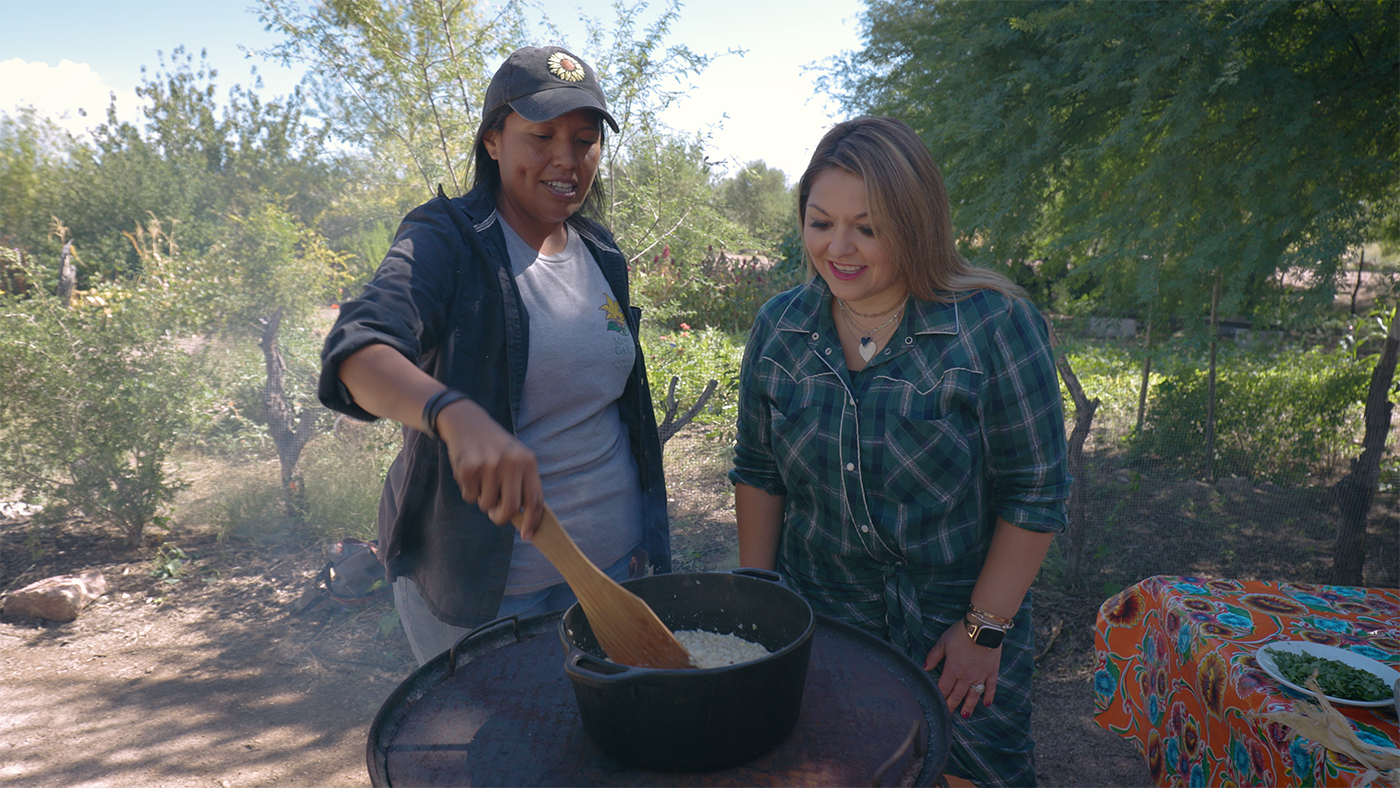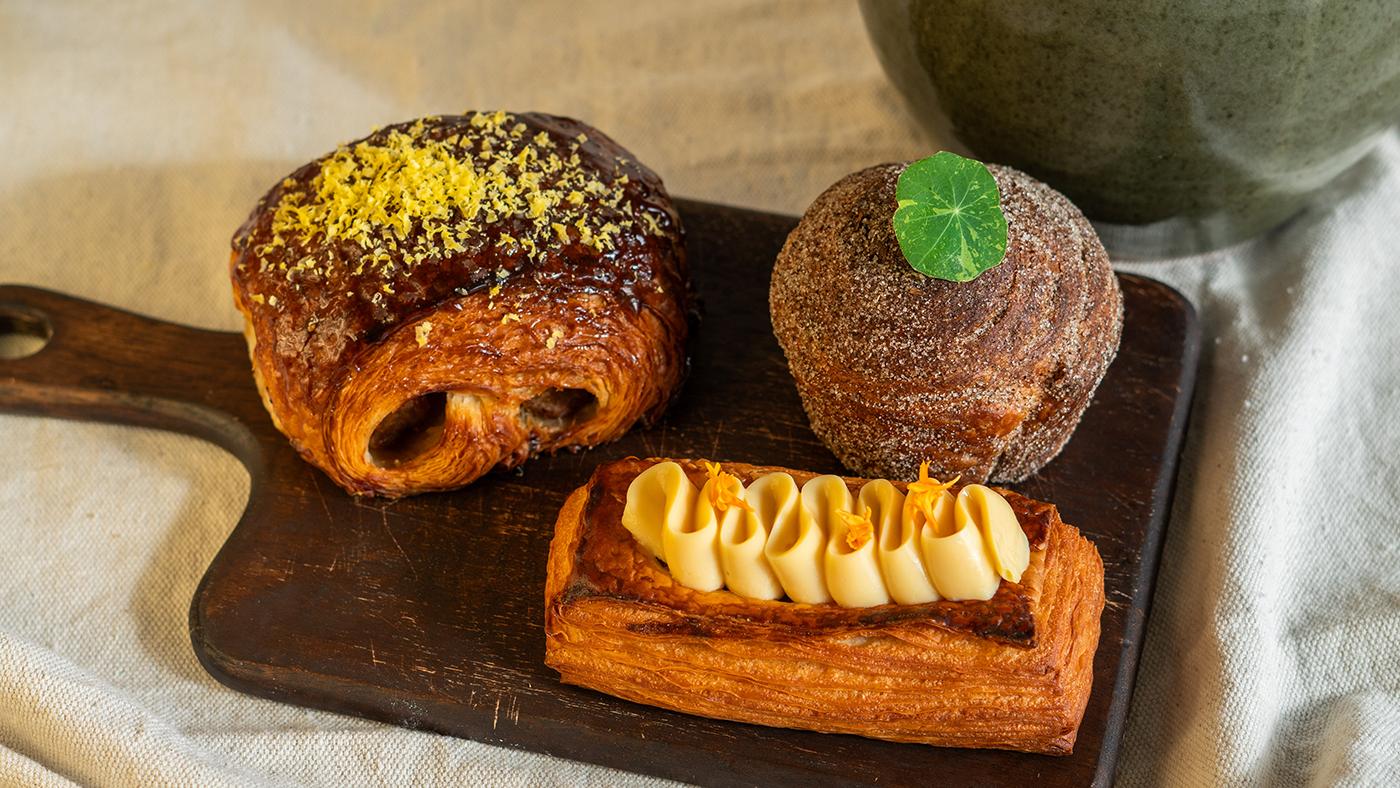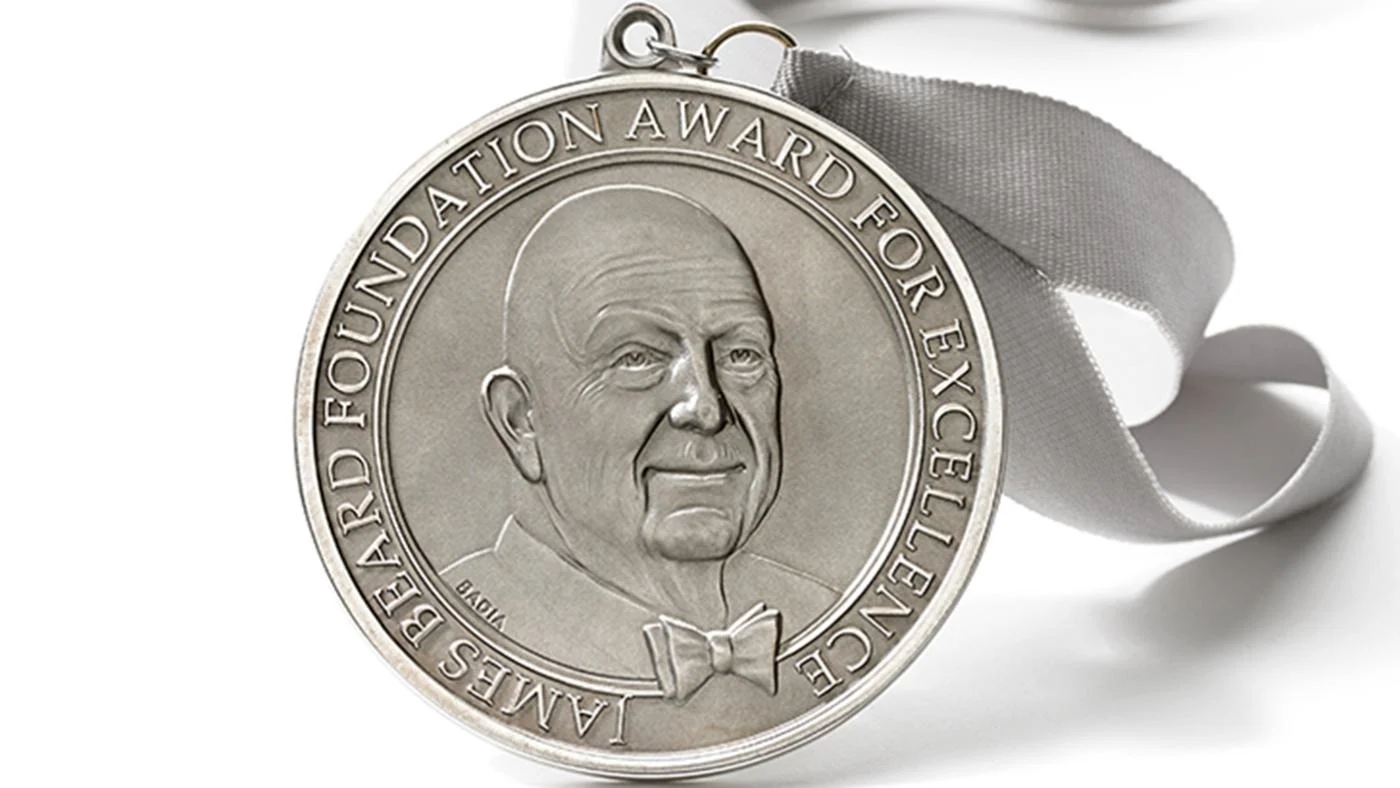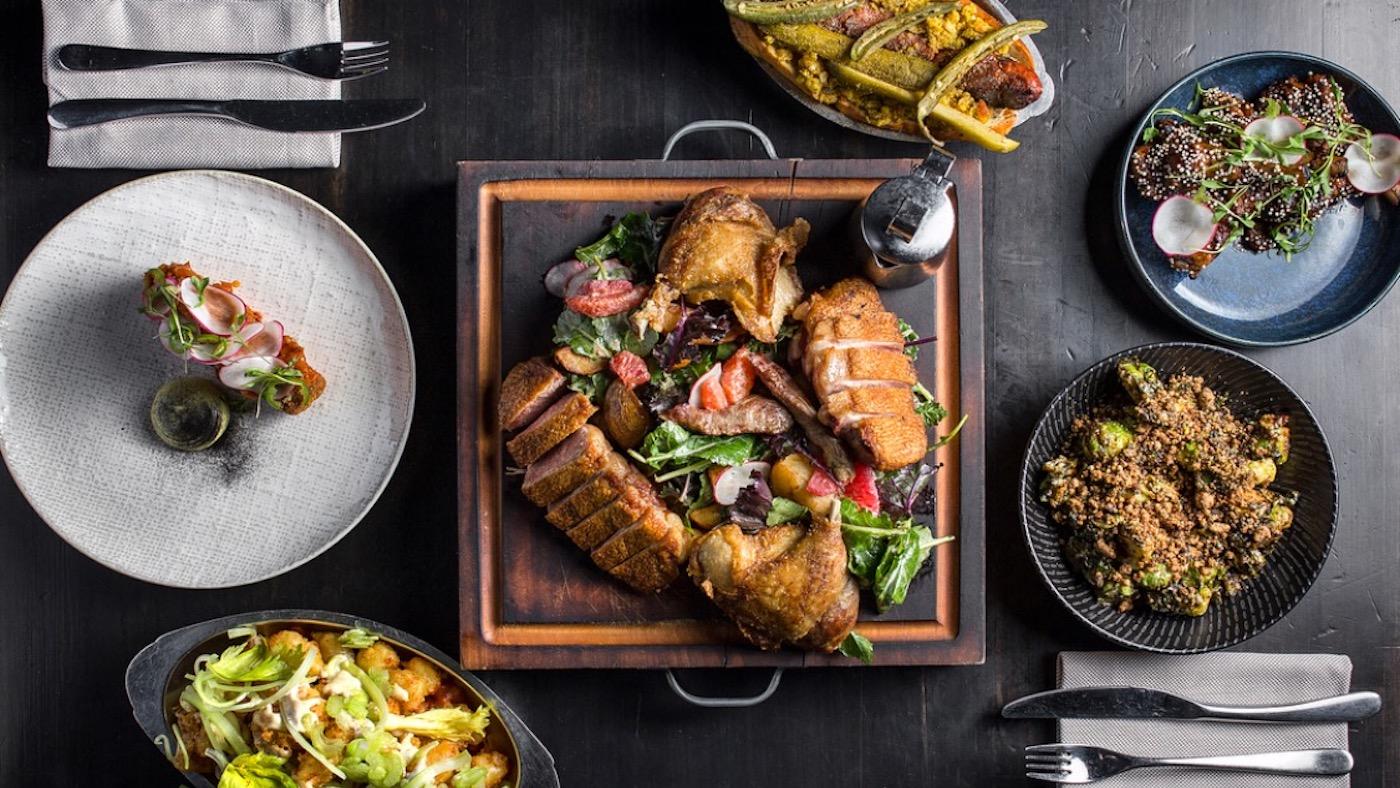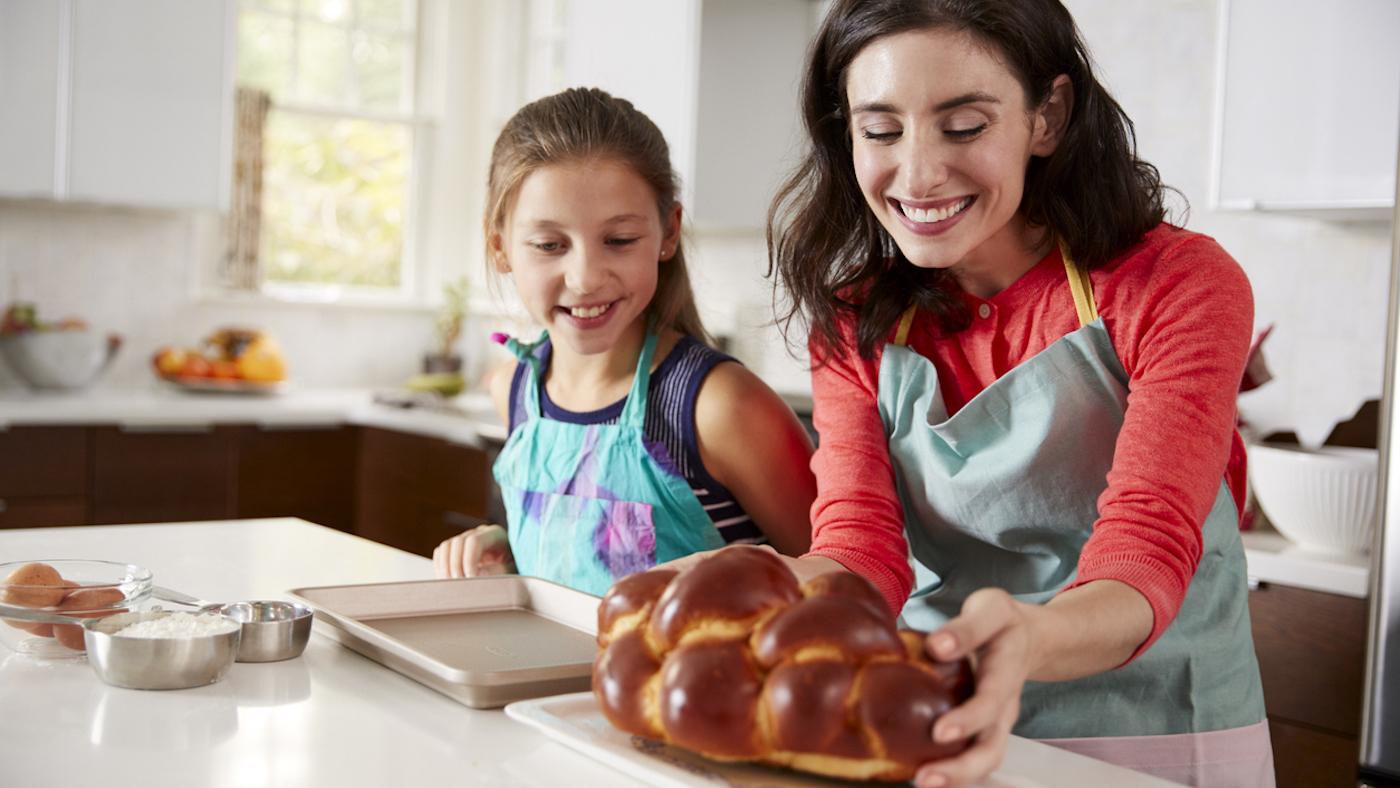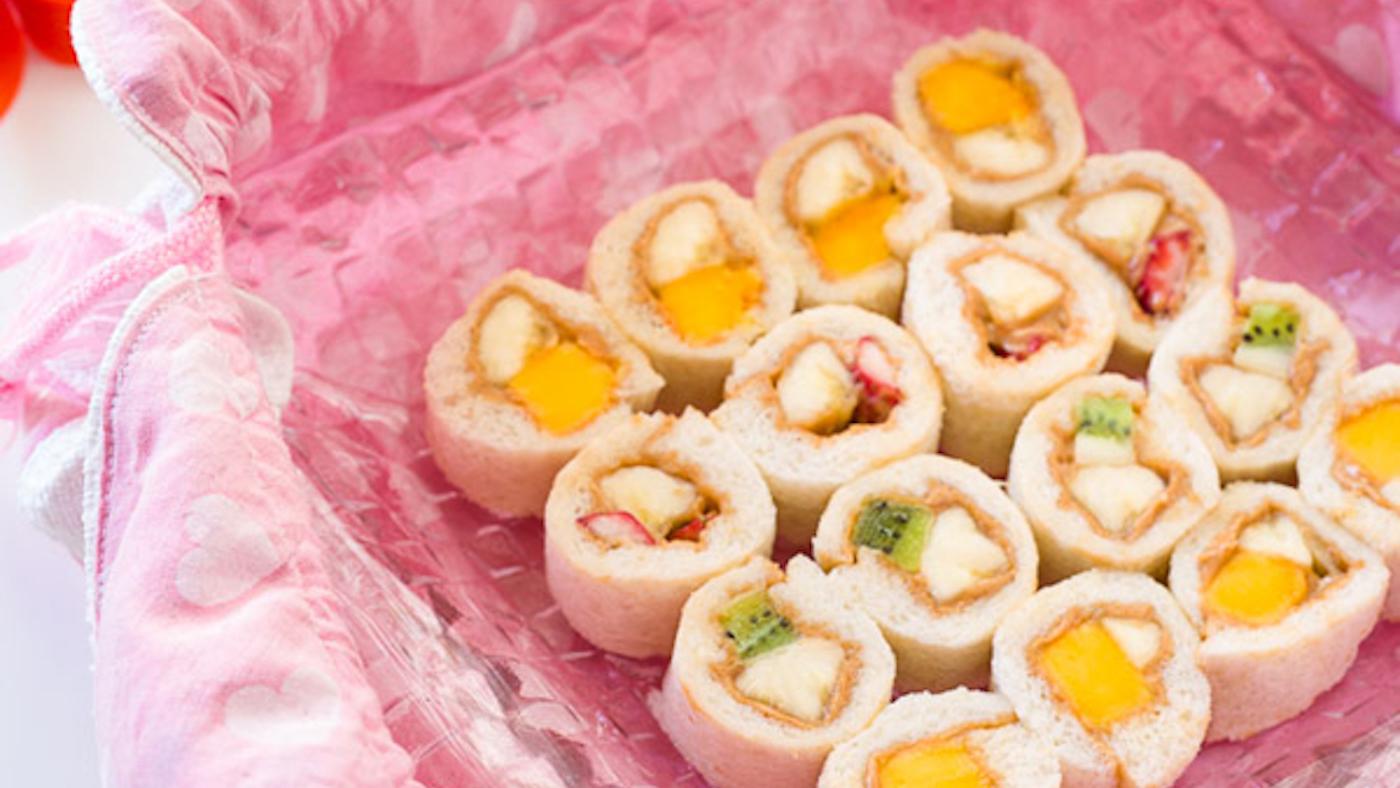A Cake Recipe for the Atomic Age: Tracking the History of a Unique Cake from Chicago's South Side
Jennifer Billock
July 18, 2022
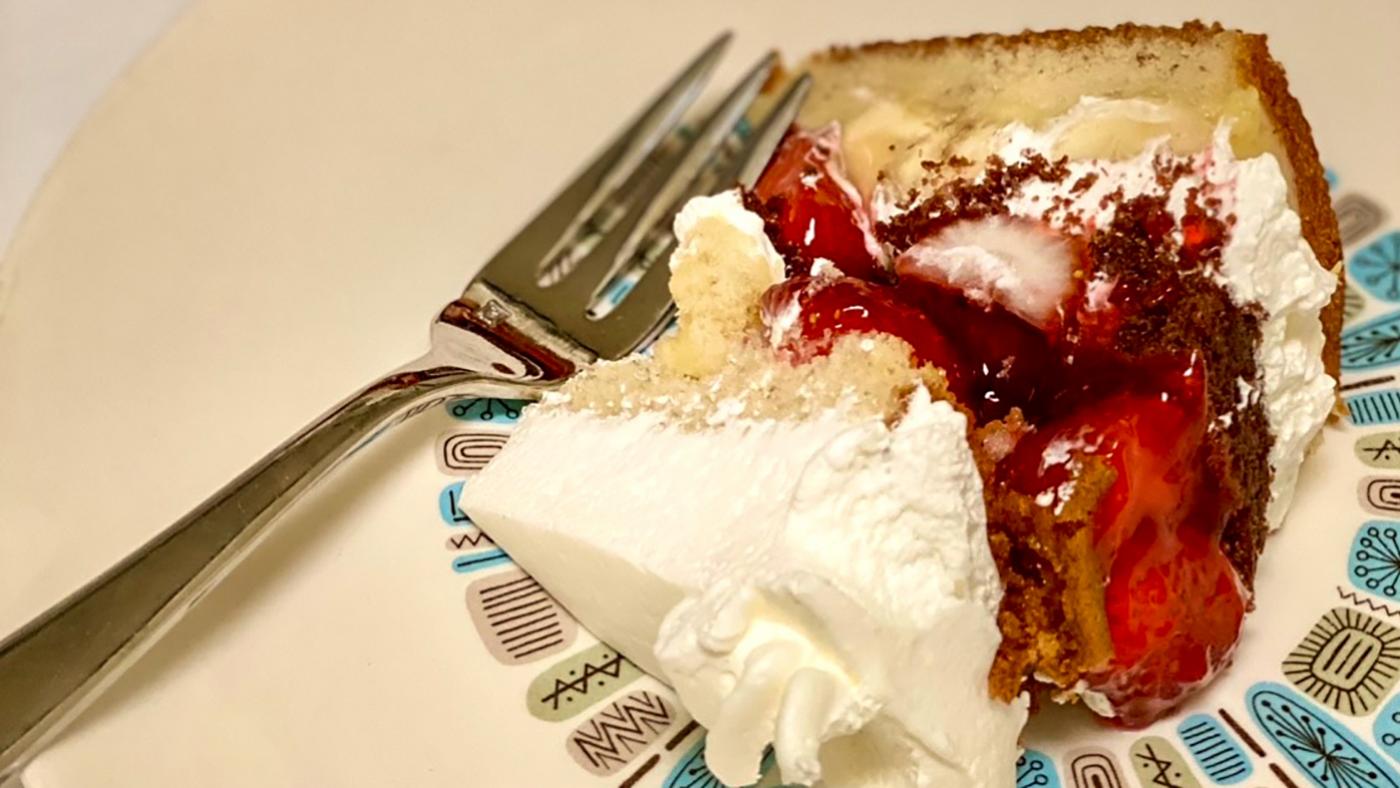
When was the last time you had an atomic cake? If you’re on the South Side, probably pretty recently. The hyperlocal cake is famous in the area and beloved by people who’ve had it.
Typically, it’s built like this: banana cake on the bottom, topped with Bavarian custard, sliced bananas, and whipped cream; then chocolate cake, topped with strawberry glaze, sliced strawberries, and whipped cream; then yellow cake topped with a layer of fudge, and the entire cake covered in whipped cream. The layer of fudge can move around, so can the layer of chocolate cake, layers of whipped cream are sometimes omitted, and sometimes the sides are bare and other times they’re fully covered.
Kim Goebel, the president of La Petite Pastry in Chicago’s Clearing neighborhood, says the cake has a mysterious background.
“I don’t know who first started [making the cake],” she said, noting that at La Petite Pastry, it’s actually called “rainbow cake.”
“I started working in the bakery in 1973, and they were already there,” Goebel says. “My husband started the business in 1967, and he’s been making it since he started.”
You’ll get that answer from many of the bakeries selling it: they don’t know where it came from, but they can’t remember it not being on the menu. Some think it may have been a product of the Baker’s Dozen, a secret society of noncompetitive Chicagoland bakers that have been meeting since the 1930s. Others claim to have invented it themselves, with historic bakery advertisements awash with claims of “inventor of the atomic cake.” In reality though, the cake’sorigin can be traced back to two bakeries: Calumet and Liberty. And the real inventor? George Kremm.
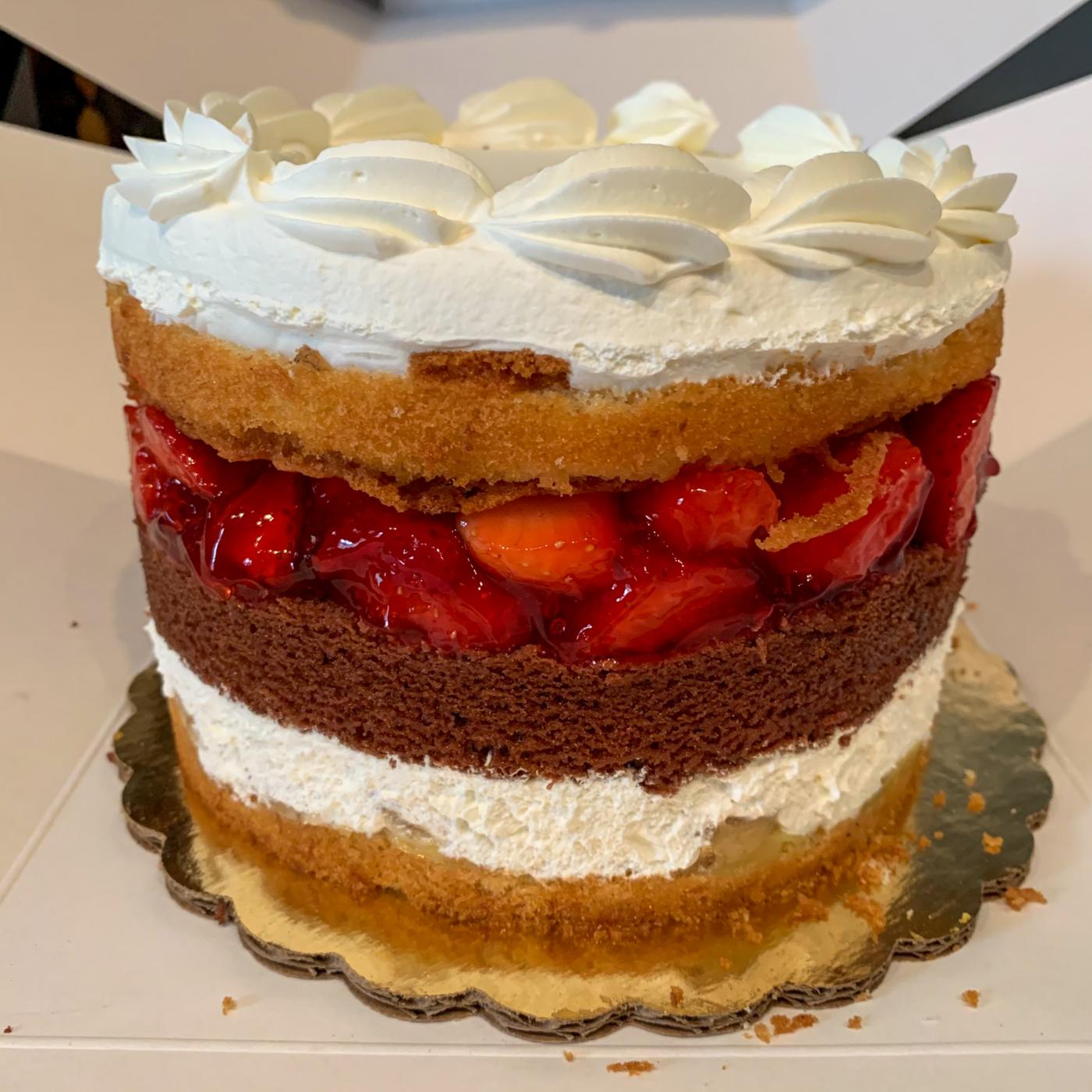 An atomic cake from Weber's Bakery. Credit: Jennifer Billock
An atomic cake from Weber's Bakery. Credit: Jennifer Billock
Baker George Kremm worked at Calumet Bakery in South Deering in the 1940s and ’50s, during the height of the Atomic Age. Kremm created a cake to honor the era while he worked at Calumet, naming it the atomic cake. But he didn’t sell the cake there. Instead, Kremm left Calumet Bakery to open his own shop, Liberty Bakery, in Roseland in the 1950s. There, he debuted his cake. Both bakeries laid claim to the inventor title, since the cake was dreamed up at Calumet but brought to the world at Liberty. It only adds to later confusion that Liberty is now closed, Calumet is famous for its atomic cake, and so many other spots claimed to invent it when the cake first surfaced.
An even deeper mystery about the atomic cake is why it’s popular almost exclusively on the South Side, where you can find it in the case at nearly every bakery and on the table at nearly every celebration. Everyone knows the atomic cake. It’s almost every bakery’s bestseller. In fact, the cake is so ubiquitous in the area that some bakers don’t even know it’s not sold elsewhere in the city. Goebel was surprised to hear as much. But up north, unless you’re talking to a baker or a transplant resident, you’ll get blank looks. That’s not to say bakeries haven’t tried to sell it, though.
“There was a bakery on the North Side, Gladstone Park Bakery, that was almost the North Side version of us,” Weber’s Bakery owner Mike Weber says in an interview for my book, Historic Chicago Bakeries. “They were like a mirror. [The owner,] Dean Hedeker, would tell my dad,‘Well I can’t sell that atomic cake up here.’ But he could make it just as good as us.”
Some bakeries sell atomic cakes on the North Side by special order only—but it’s a relatively unknown dessert there. No one I asked—about 10 different bakers—knows why.
“It’s really Chicago,” Goebel says. “It’s a Chicago thing. I have relatives in Colorado and I tried calling a bakery out there to tell them to make this and they’re like, ‘Banana cake? What’s banana cake?’”
So why did so many bakeries claim to invent it, leaving the origins of the cake murky to those who ask? Because practically every bakery has their own spin on it. La Petite’s rainbow cake has whipped cream, a thin layer of fudge, yellow cake, fresh strawberries, chocolate cake, fresh bananas, and banana cake, and all pure whipped cream in between. The sides are left uncovered, but the top has a colorful swirl of whipped cream.
Weber’s version of the atomic cake is called the banana split torte. The top and bottom cakes are banana, omitting the yellow cake altogether. The sides are left uncovered here as well. Other bakeries cover the entire thing in whipped cream and some use buttercream. Some bakeries call it a bomb cake instead of an atomic cake.
“People make them all different,” Goebel said. “Some don’t have bananas, some alternate where the chocolate cake goes with the chocolate fudge.”
Sometimes it’s not even the traditional round cake. Goebel sells a round cake, a sheet cake version, and a parfait version. Orland Park Bakery sells atomic cake paczki. Other bakeries sell atomic cupcakes and atomic donuts, and one enterprising burger joint once sold an atomic cake burger. But one thing you’ll probably never find is the cake sold as a single slice. The fresh bananas brown after cutting a slice, and no one wants to buy a slice of cake showcasing browned bananas.
Next time you indulge in some atomic cake, know that you're dining on some complicated but delicious Chicago baking history.
Atomic Cake
Adapted from La Petite Pastry’s Rainbow Cake Recipe
Note: Feel free to use more or less of the fillings and whipped cream. It’s all up to your taste preference! You may also use store-bought Bavarian cream, strawberry glaze, and chocolate fudge for convenience, but take the time to make fresh whipped cream—it’s worth it.
Ingredients
1 prepared 9-inch round banana cake (ingredients below)
2 bananas, sliced
1 cup Bavarian cream (ingredients below)
1 prepared 9-inch round chocolate cake (ingredients below)
1 cup strawberries, sliced
1 cup strawberry glaze
1 prepared 9-inch round yellow cake (ingredients below)
1/2 cup chocolate fudge (ingredients below)
3 cups whipped cream (ingredients below)
For the Banana Cake:
2 cups flour
1 1/4 cups sugar
1 teaspoon baking soda
1/2 teaspoon salt
3 ripe bananas, mashed
3/4 cup buttermilk
1/2 butter, softened
1 teaspoon vanilla
2 eggs, room temperature
For the Chocolate Cake:
1 cup unsweetened cocoa powder
2 cups flour
1 teaspoon baking soda
1 1/2 teaspoon baking powder
1 teaspoon salt
2 cups sugar
3 eggs, room temperature
3/4 cup butter, softened
1 1/2 cups milk
2 teaspoons vanilla
For the Yellow Cake:
2 1/2 cups flour
1 2/3 cups sugar
2 1/2 teaspoons baking powder
1/4 teaspoon salt
3/4 cups butter, softened
3 eggs, room temperature
1 1/4 teaspoon vanilla
1 1/4 cups milk
For the Bavarian Cream:
1/2 tablespoon powdered gelatin
2 tablespoons cold water
1 egg yolk
1 1/2 tablespoons sugar
1/2 cup half-and-half
1/2 cup heavy cream
For the Strawberry Glaze:
1 pound strawberries, hulled and chopped
1 1/2 cups white sugar
1 tablespoon lemon juice
For the Chocolate Fudge:
3/4 cup sweetened condensed milk
1/2 cup semisweet chocolate chips
1 tablespoon butter
For the Whipped Cream:
1.5 cups heavy whipping cream
1 tablespoon powdered sugar
1 teaspoon vanilla (optional)
Directions
1. Make the banana cake. Preheat the oven to 350. Grease and flour a 9-inch round cake pan. Mix together all dry ingredients. Add bananas, buttermilk, butter, and vanilla. Mix until combined. Add eggs. Mix until combined. Transfer batter to pan and cook for 25 to 30 minutes, until a toothpick comes out clean. When cool, trim the top so it’s flat.
2. Make the chocolate cake. Preheat the oven to 350. Grease a 9-inch round cake pan and put parchment on the bottom. Mix together all dry ingredients. Add remaining ingredients and mix well. Transfer batter to pan and cook for 30 minutes or until a toothpick comes out clean. When cool, trim the top so it’s flat.
3. Make the yellow cake. Preheat the oven to 350. Grease and flour a 9-inch round cake pan. Mix together all dry ingredients. Add remaining ingredients and mix well. Transfer batter to pan and cook for 20 to 25 minutes or until a toothpick comes out clean. When cool, trim the top so it’s flat.
4. Make the Bavarian cream. Mix gelatin in water and set aside to bloom. Meanwhile,whisk the egg yolk and sugar until foamy. Heat half-and-half in a small pot over low heat until boiling.Temper the egg mixture with the hot half-and-half, then pour egg mixture into the pot while stirring. Continue boiling for 3 more minutes. Remove custard from heat, mix in gelatin, and set aside to cool. Meanwhile, whip cream to stiff peaks. Once the custard is cool, fold in whipped cream. Cover and refrigerate until set, about an hour.
5. Make the strawberry glaze. Add strawberries and sugar to a pot. Bring to a boil over medium-low heat. Add the lemon juice and continue boiling and stirring until thickened, about 10 to 15 minutes. Blend jam with an immersion blender until smooth. Cook a few minutes longer, then set aside to cool.
6. Make the chocolate fudge. Combine all ingredients in a double boiler and beat until the chocolate is melted and the sauce is smooth.
7. Make the whipped cream. Combine all ingredients and blend with a stand mixer or hand mixer until the whipped cream has stiff peaks. Cover and store in the fridge until needed.
8. When the cakes are cool, construct the atomic cake: Put the banana cake on a plate. Pipe a ring of whipped cream around the edge, about 1 inch tall. Fill in the middle with Bavarian cream. Spread the sliced bananas on top of the Bavarian cream. Put the chocolate cake on top. Pipe a ring of whipped cream around the edge, about 1 inch tall. Fill the middle with strawberries. Spread the strawberry glaze on top of the strawberries. Pipe a dot of whipped cream into the center. Put the yellow cake on top. Spread a thin layer of fudge on top of the yellow cake. Spread the whipped cream on top, about 1 inch tall, and decorate as you see fit. Leave the sides of the cake bare.
9. Refrigerate the cake for 30 minutes minimum before serving to allow the layers to firm up.

